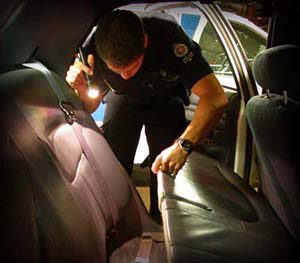Supreme Court Decision Allows Admission of Evidence After Illegal Stop
A recent U.S. Supreme Court decision is making headlines and putting people up in arms about the potential implications. Is it as bad as they say? It definitely could play out that way and, although the Supreme Court allowed the admission of evidence obtained after an illegal stop, the Justices didn’t completely throw probable cause out the window.
The case stemmed from a surveillance operation of a home after local police received an anonymous tip suggesting frequent drug activity. Over the course of the surveillance, an officer observed numerous brief visits in and out of the house and eventually detained an individual, apparently at random, upon leaving the house. The officer identified himself, asked the individual what he was doing at the house, requested identification, and then relayed the information to dispatch, subsequently finding an active arrest warrant for a traffic violation. The officer arrested and searched him, and found methamphetamine and drug paraphernalia on his person.
The defendant moved to suppress the evidence based on an unlawful investigatory stop, i.e. no probable cause, which was initially denied. However, the Utah Court of Appeals reversed and ultimately suppressed the evidence. The Supreme Court disagreed.
The 4th Amendment and the Exclusionary Rule
The 4th Amendment protects us from unreasonable searches and seizures. Case law protects us from the admission of illegally obtained evidence–the exclusionary rule. Evidence obtained as a direct result of an illegal search and seizure, as well as evidence later discovered as part of that illegality, is not admissible. You can’t use the fruit from the poisonous tree. 
As with most things, exceptions apply and the exclusionary rule is no different. When the costs of exclusion outweigh its deterrent benefits, the exclusionary rule will not apply. Officers can admit evidence obtained from an unlawful search if that evidence was obtained from an independently acquired source or if it would have been discovered regardless of an unconstitutional source. But, it’s the 3rd exception the Supreme Court used when handing down their recent decision.
The attenuation doctrine says when evidence “has become so attenuated as to dissipate the taint” it will be admissible. What does that even mean? Evidence discovered through government misconduct is admissible if the connection between the misconduct and the discovery of the evidence is sufficiently weak.
Justice Thomas’s Majority Opinion vs. Justice Sotomayor’s Dissent
When applying the attenuation doctrine, courts are to consider:
- “temporal proximity” between unconstitutional conduct and discovery of evidence to determine how closely discovery of evidence followed an unconstitutional search,
- “presence of intervening circumstances,” and
- “purpose and flagrancy of the official misconduct.”
Justice Thomas’s opinion explains discovery of the defendant’s “valid arrest warrant was a sufficient intervening event to break the causal chain between the unlawful stop and the discovery of drug-related evidence…” The opinion rationalizes, although the temporal proximity of time between the illegal stop and discovery of evidence favors suppression, presence of a valid arrest warrant unrelated to an illegal stop and a lack of purposeful or flagrant disregard for constitutional rights is enough to weaken the casual link.
The opinion goes on to explain, despite the fact that the officer should have asked the defendant if he could speak to him, rather than demanding so, these mistakes didn’t rise to the level of a 4th Amendment violation, but merely “at most negligent” and an “isolated incident in connection with a bona fide investigation of a suspected drug house.” Nothing prevents an officer from approaching an individual simply to ask.
Justice Sotomayor’s dissent argues pretty flawlessly the decision allows officers to stop anyone off the street, ask for their license, check for pending warrants, even small ones such as unpaid traffic tickets, and ultimately forgive any officer wrongdoing upon finding an arrest warrant.
“Fruit that must be cast aside includes not only evidence directly found by an illegal search but also evidence ‘come at by exploitation of that illegality’”
Asking questions doesn’t result in a seizure, but, Justice Sotomayor explains, the officer “exploited his illegal stop to discover” the drugs. The drugs were found only after learning of the traffic violation and he only learned of that traffic violation because he unlawfully stopped to check the defendant’s license. Classic fruit of the poisonous tree argument.
Further, she reasons the officer acknowledged his sole purpose for stopping the defendant was investigative and not an isolated incident. Warrant checks incident to a traffic stop are integral to the safety of the roadways whereas, here, the officer had no probable cause to believe the defendant was a danger. Justice Sotomayor goes on to explain the warrant check was for the sole and hopeful purpose of finding something against the defendant. In other words, finding an arrest warrant wasn’t an intervening circumstance leading to a break in the casual link.
Although Justice Sotomayor’s dissent that the majority wrongfully applied the rule hit the nail on the head, the silver lining is that the majority opinion rests on the particular facts of this case and doesn’t seem to be intended as a blanket rule applying to any illegal stops. However, in application, the effects of this ruling will inevitably be challenged and it will be interesting to see how this decision’s applied in other situations.


Comments